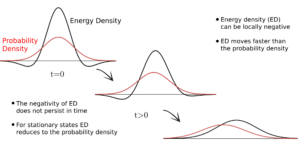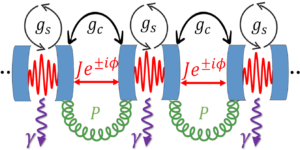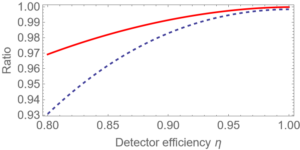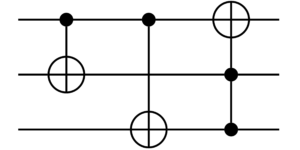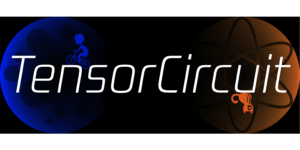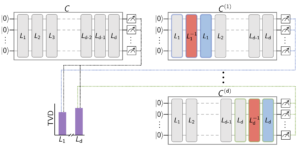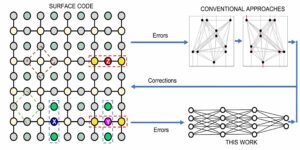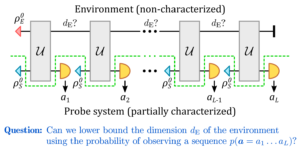Laboratoire Kastler Brossel, Sorbonne Université, CNRS, ENS-Université PSL, Collège de France, 4 place Jussieu, F-75252 Paris, France
Find this paper interesting or want to discuss? Scite or leave a comment on SciRate.
Abstract
Quantum correlations and Wigner negativity are two important signatures of nonclassicality in continuous-variable quantum systems. In this work, we investigate how both are intertwined in the context of the conditional generation of Wigner negativity. It was previously shown that when Alice and Bob share a Gaussian state, Bob can perform some measurement on his system to create Wigner negativity on Alice's side if and only if there is Gaussian steering from Alice to Bob. In this work, we attempt to generalise these findings to a much broader class of scenarios on which Alice and Bob share a non-Gaussian state. We show that if Alice can initially steer Bob's system with Wigner-positive measurements, Bob can remotely create Wigner negativity in Alice's subsystem. Even though this shows that quantum steering is sufficient, we also show that quantum correlations are in general not necessary for the conditional generation of Wigner negativity.
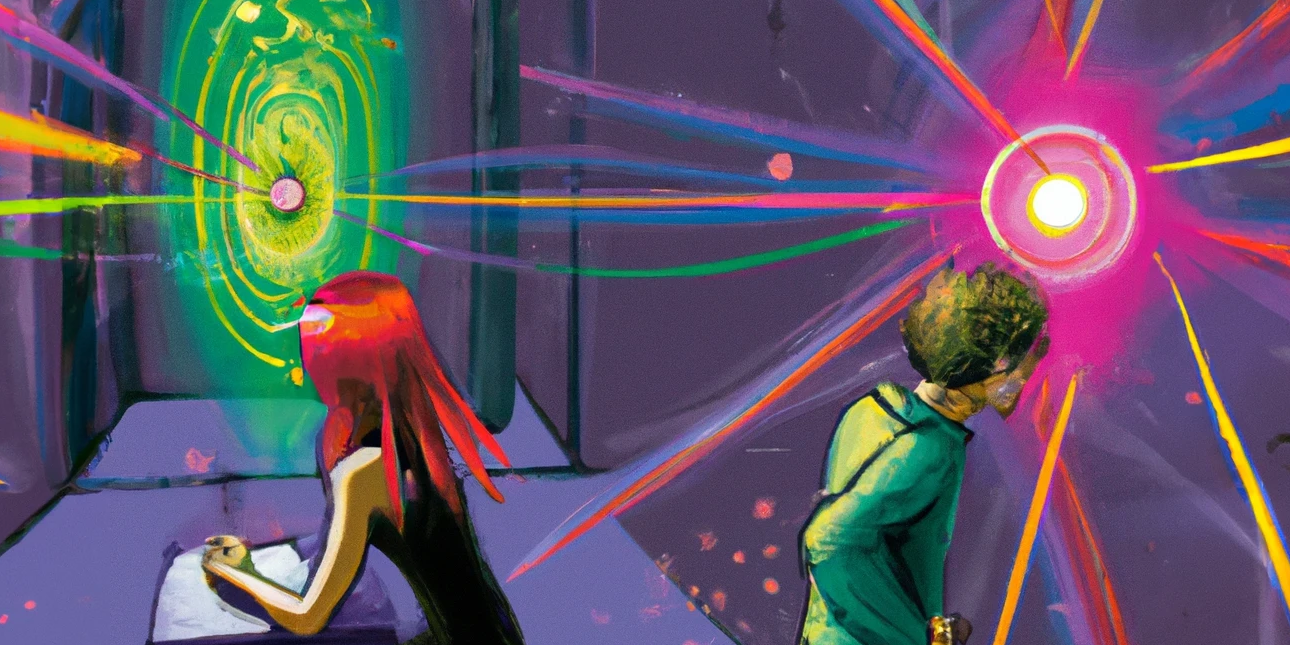
Popular summary
In this work, it is shown that one can also look at quantum steering from a different point of view. We show that whenever Alice can steer Bob, Bob’s measurements can induce a property known as Wigner negativity in Alice’s lab. The presence of Wigner negativity means that the measurements done in Alice’s lab cannot all be consistently described by classical physics. This makes it a very important quantum effect, which has even been shown to be necessary for building quantum computers.
If Alice and Bob share a very specific type of quantum state, known as a Gaussian state, it was proven that if Alice cannot steer Bob, Bob can never create Wigner negativity, no matter how hard he tries. However, we show that this is not the case when Alice and Bob share a more general quantum state. We found that there are even quantum states without any quantum correlations which still allow Bob’s measurements to create Wigner negativity is Alice’s lab.
This work completes our understanding of the link between quantum steering and Wigner negativity. On the one hand, it shows that quantum steering is an extremely useful resource to remotely prepare Wigner negativity. On the other hand, it also shows that the ability to remotely prepare Wigner negativity is not enough to conclude the presence of any type of quantum correlation.
► BibTeX data
► References
[1] B. M. Terhal, J. Conrad, and C. Vuillot, Quantum Science and Technology 5, 043001 (2020).
https://doi.org/10.1088/2058-9565/ab98a5
[2] K. Fukui, A. Tomita, A. Okamoto, and K. Fujii, Phys. Rev. X 8, 021054 (2018).
https://doi.org/10.1103/PhysRevX.8.021054
[3] A. L. Grimsmo and S. Puri, PRX Quantum 2, 020101 (2021).
https://doi.org/10.1103/PRXQuantum.2.020101
[4] A. S. Darmawan, B. J. Brown, A. L. Grimsmo, D. K. Tuckett, and S. Puri, PRX Quantum 2, 030345 (2021).
https://doi.org/10.1103/PRXQuantum.2.030345
[5] I. Tzitrin, T. Matsuura, R. N. Alexander, G. Dauphinais, J. E. Bourassa, K. K. Sabapathy, N. C. Menicucci, and I. Dhand, PRX Quantum 2, 040353 (2021).
https://doi.org/10.1103/PRXQuantum.2.040353
[6] C. Chamberland, K. Noh, P. Arrangoiz-Arriola, E. T. Campbell, C. T. Hann, J. Iverson, H. Putterman, T. C. Bohdanowicz, S. T. Flammia, A. Keller, G. Refael, J. Preskill, L. Jiang, A. H. Safavi-Naeini, O. Painter, and F. G. Brandão, PRX Quantum 3, 010329 (2022).
https://doi.org/10.1103/PRXQuantum.3.010329
[7] B. Q. Baragiola, G. Pantaleoni, R. N. Alexander, A. Karanjai, and N. C. Menicucci, Phys. Rev. Lett. 123, 200502 (2019).
https://doi.org/10.1103/PhysRevLett.123.200502
[8] P. Campagne-Ibarcq, A. Eickbusch, S. Touzard, E. Zalys-Geller, N. E. Frattini, V. V. Sivak, P. Reinhold, S. Puri, S. Shankar, R. J. Schoelkopf, L. Frunzio, M. Mirrahimi, and M. H. Devoret, Nature 584, 368 (2020).
https://doi.org/10.1038/s41586-020-2603-3
[9] B. de Neeve, T.-L. Nguyen, T. Behrle, and J. P. Home, Nature Physics 18, 296 (2022).
https://doi.org/10.1038/s41567-021-01487-7
[10] L. Hu, Y. Ma, W. Cai, X. Mu, Y. Xu, W. Wang, Y. Wu, H. Wang, Y. P. Song, C. L. Zou, S. M. Girvin, L.-M. Duan, and L. Sun, Nature Physics 15, 503 (2019).
https://doi.org/10.1038/s41567-018-0414-3
[11] R. Lescanne, M. Villiers, T. Peronnin, A. Sarlette, M. Delbecq, B. Huard, T. Kontos, M. Mirrahimi, and Z. Leghtas, Nature Physics 16, 509 (2020).
https://doi.org/10.1038/s41567-020-0824-x
[12] C. S. Hamilton, R. Kruse, L. Sansoni, S. Barkhofen, C. Silberhorn, and I. Jex, Phys. Rev. Lett. 119, 170501 (2017).
https://doi.org/10.1103/PhysRevLett.119.170501
[13] N. Quesada, J. M. Arrazola, and N. Killoran, Phys. Rev. A 98, 062322 (2018).
https://doi.org/10.1103/PhysRevA.98.062322
[14] N. Quesada, R. S. Chadwick, B. A. Bell, J. M. Arrazola, T. Vincent, H. Qi, and R. García-Patrón, PRX Quantum 3, 010306 (2022).
https://doi.org/10.1103/PRXQuantum.3.010306
[15] J. F. F. Bulmer, B. A. Bell, R. S. Chadwick, A. E. Jones, D. Moise, A. Rigazzi, J. Thorbecke, U.-U. Haus, T. V. Vaerenbergh, R. B. Patel, I. A. Walmsley, and A. Laing, Science Advances 8, eabl9236 (2022).
https://doi.org/10.1126/sciadv.abl9236
[16] H.-S. Zhong, H. Wang, Y.-H. Deng, M.-C. Chen, L.-C. Peng, Y.-H. Luo, J. Qin, D. Wu, X. Ding, Y. Hu, P. Hu, X.-Y. Yang, W.-J. Zhang, H. Li, Y. Li, X. Jiang, L. Gan, G. Yang, L. You, Z. Wang, L. Li, N.-L. Liu, C.-Y. Lu, and J.-W. Pan, Science 370, 1460 (2020).
https://doi.org/10.1126/science.abe8770
[17] H.-S. Zhong, Y.-H. Deng, J. Qin, H. Wang, M.-C. Chen, L.-C. Peng, Y.-H. Luo, D. Wu, S.-Q. Gong, H. Su, Y. Hu, P. Hu, X.-Y. Yang, W.-J. Zhang, H. Li, Y. Li, X. Jiang, L. Gan, G. Yang, L. You, Z. Wang, L. Li, N.-L. Liu, J. J. Renema, C.-Y. Lu, and J.-W. Pan, Phys. Rev. Lett. 127, 180502 (2021).
https://doi.org/10.1103/PhysRevLett.127.180502
[18] L. S. Madsen, F. Laudenbach, M. F. Askarani, F. Rortais, T. Vincent, J. F. F. Bulmer, F. M. Miatto, L. Neuhaus, L. G. Helt, M. J. Collins, A. E. Lita, T. Gerrits, S. W. Nam, V. D. Vaidya, M. Menotti, I. Dhand, Z. Vernon, N. Quesada, and J. Lavoie, Nature 606, 75 (2022).
https://doi.org/10.1038/s41586-022-04725-x
[19] C. Weedbrook, S. Pirandola, R. García-Patrón, N. J. Cerf, T. C. Ralph, J. H. Shapiro, and S. Lloyd, Rev. Mod. Phys. 84, 621 (2012).
https://doi.org/10.1103/RevModPhys.84.621
[20] C. Fabre and N. Treps, Rev. Mod. Phys. 92, 035005 (2020).
https://doi.org/10.1103/RevModPhys.92.035005
[21] M. Walschaers, PRX Quantum 2, 030204 (2021).
https://doi.org/10.1103/PRXQuantum.2.030204
[22] X. Su, Y. Zhao, S. Hao, X. Jia, C. Xie, and K. Peng, Opt. Lett. 37, 5178 (2012).
https://doi.org/10.1364/OL.37.005178
[23] Y. Cai, J. Roslund, G. Ferrini, F. Arzani, X. Xu, C. Fabre, and N. Treps, Nat. Commun. 8, 15645 (2017).
https://doi.org/10.1038/ncomms15645
[24] W. Asavanant, Y. Shiozawa, S. Yokoyama, B. Charoensombutamon, H. Emura, R. N. Alexander, S. Takeda, J.-i. Yoshikawa, N. C. Menicucci, H. Yonezawa, and A. Furusawa, Science 366, 373 (2019).
https://doi.org/10.1126/science.aay2645
[25] M. V. Larsen, X. Guo, C. R. Breum, J. S. Neergaard-Nielsen, and U. L. Andersen, Science 366, 369 (2019).
https://doi.org/10.1126/science.aay4354
[26] A. Mari and J. Eisert, Phys. Rev. Lett. 109, 230503 (2012).
https://doi.org/10.1103/PhysRevLett.109.230503
[27] V. Veitch, C. Ferrie, D. Gross, and J. Emerson, New Journal of Physics 14, 113011 (2012).
https://doi.org/10.1088/1367-2630/14/11/113011
[28] U. Chabaud and M. Walschaers, Phys. Rev. Lett. 130, 090602 (2023).
https://doi.org/10.1103/PhysRevLett.130.090602
[29] M. Walschaers and N. Treps, Phys. Rev. Lett. 124, 150501 (2020).
https://doi.org/10.1103/PhysRevLett.124.150501
[30] M. Walschaers, V. Parigi, and N. Treps, PRX Quantum 1, 020305 (2020).
https://doi.org/10.1103/PRXQuantum.1.020305
[31] Y. Xiang, S. Liu, J. Guo, Q. Gong, N. Treps, Q. He, and M. Walschaers, npj Quantum Information 8, 21 (2022).
https://doi.org/10.1038/s41534-022-00533-3
[32] Y.-S. Ra, A. Dufour, M. Walschaers, C. Jacquard, T. Michel, C. Fabre, and N. Treps, Nature Physics 16, 144 (2020).
https://doi.org/10.1038/s41567-019-0726-y
[33] S. Liu, D. Han, N. Wang, Y. Xiang, F. Sun, M. Wang, Z. Qin, Q. Gong, X. Su, and Q. He, Phys. Rev. Lett. 128, 200401 (2022).
https://doi.org/10.1103/PhysRevLett.128.200401
[34] E. Wigner, Phys. Rev. 40, 749 (1932).
https://doi.org/10.1103/PhysRev.40.749
[35] K. E. Cahill and R. J. Glauber, Phys. Rev. 177, 1882 (1969).
https://doi.org/10.1103/PhysRev.177.1882
[36] M. Hillery, R. O'Connell, M. Scully, and E. Wigner, Physics Reports 106, 121 (1984).
https://doi.org/10.1016/0370-1573(84)90160-1
[37] A. S. Holevo, Statistical Structure of Quantum Theory, Lecture Notes in Physics Monographs, Vol. 67 (Springer Berlin Heidelberg, Berlin, Heidelberg, 2001).
https://doi.org/10.1007/3-540-44998-1
[38] E. Schrödinger, Mathematical Proceedings of the Cambridge Philosophical Society 31, 555–563 (1935).
https://doi.org/10.1017/S0305004100013554
[39] E. Schrödinger, Mathematical Proceedings of the Cambridge Philosophical Society 32, 446–452 (1936).
https://doi.org/10.1017/S0305004100019137
[40] E. G. Cavalcanti, S. J. Jones, H. M. Wiseman, and M. D. Reid, Phys. Rev. A 80, 032112 (2009).
https://doi.org/10.1103/PhysRevA.80.032112
[41] M. D. Reid, P. D. Drummond, W. P. Bowen, E. G. Cavalcanti, P. K. Lam, H. A. Bachor, U. L. Andersen, and G. Leuchs, Rev. Mod. Phys. 81, 1727 (2009).
https://doi.org/10.1103/RevModPhys.81.1727
[42] H. M. Wiseman, S. J. Jones, and A. C. Doherty, Phys. Rev. Lett. 98, 140402 (2007).
https://doi.org/10.1103/PhysRevLett.98.140402
[43] D. Cavalcanti and P. Skrzypczyk, Reports on Progress in Physics 80, 024001 (2016).
https://doi.org/10.1088/1361-6633/80/2/024001
[44] R. Uola, A. C. S. Costa, H. C. Nguyen, and O. Gühne, Rev. Mod. Phys. 92, 015001 (2020).
https://doi.org/10.1103/RevModPhys.92.015001
[45] J. Schneeloch, C. J. Broadbent, S. P. Walborn, E. G. Cavalcanti, and J. C. Howell, Phys. Rev. A 87, 062103 (2013).
https://doi.org/10.1103/PhysRevA.87.062103
[46] B. Yadin, M. Fadel, and M. Gessner, Nature Communications 12, 2410 (2021).
https://doi.org/10.1038/s41467-021-22353-3
[47] C. E. Lopetegui, M. Gessner, M. Fadel, N. Treps, and M. Walschaers, PRX Quantum 3, 030347 (2022).
https://doi.org/10.1103/PRXQuantum.3.030347
[48] A. Cavaillès, H. Le Jeannic, J. Raskop, G. Guccione, D. Markham, E. Diamanti, M. D. Shaw, V. B. Verma, S. W. Nam, and J. Laurat, Phys. Rev. Lett. 121, 170403 (2018).
https://doi.org/10.1103/PhysRevLett.121.170403
[49] L. Lami, C. Hirche, G. Adesso, and A. Winter, Phys. Rev. Lett. 117, 220502 (2016).
https://doi.org/10.1103/PhysRevLett.117.220502
[50] L. Lami, A. Serafini, and G. Adesso, New Journal of Physics 20, 023030 (2018).
https://doi.org/10.1088/1367-2630/aaa654
[51] I. Kogias, A. R. Lee, S. Ragy, and G. Adesso, Phys. Rev. Lett. 114, 060403 (2015a).
https://doi.org/10.1103/PhysRevLett.114.060403
[52] I. Kogias, P. Skrzypczyk, D. Cavalcanti, A. Acín, and G. Adesso, Phys. Rev. Lett. 115, 210401 (2015b).
https://doi.org/10.1103/PhysRevLett.115.210401
[53] A. Einstein, B. Podolsky, and N. Rosen, Phys. Rev. 47, 777 (1935).
https://doi.org/10.1103/PhysRev.47.777
[54] M. D. Reid, Phys. Rev. A 40, 913 (1989).
https://doi.org/10.1103/PhysRevA.40.913
[55] U. Chabaud, D. Markham, and F. Grosshans, Phys. Rev. Lett. 124, 063605 (2020).
https://doi.org/10.1103/PhysRevLett.124.063605
[56] R. Filip and L. Mišta, Phys. Rev. Lett. 106, 200401 (2011).
https://doi.org/10.1103/PhysRevLett.106.200401
[57] C. Ferrie, Reports on Progress in Physics 74, 116001 (2011).
https://doi.org/10.1088/0034-4885/74/11/116001
[58] R. I. Booth, U. Chabaud, and P.-E. Emeriau, Phys. Rev. Lett. 129, 230401 (2022).
https://doi.org/10.1103/PhysRevLett.129.230401
[59] J. Haferkamp and J. Bermejo-Vega, Equivalence of contextuality and wigner function negativity in continuous-variable quantum optics (2021).
https://doi.org/10.48550/ARXIV.2112.14788
Cited by
[1] Carlos L. Benavides-Riveros, "Orbital-Free Quasi-Density Functional Theory", arXiv:2304.09056, (2023).
[2] Zi-wei Zhan, Bo Lan, Jian Wang, and Xue-xiang Xu, "Coupled three-mode squeezed vacuum: Gaussian steering and Remote generation of Wigner negativity", arXiv:2212.14261, (2022).
The above citations are from SAO/NASA ADS (last updated successfully 2023-06-07 23:00:22). The list may be incomplete as not all publishers provide suitable and complete citation data.
On Crossref's cited-by service no data on citing works was found (last attempt 2023-06-07 23:00:20).
This Paper is published in Quantum under the Creative Commons Attribution 4.0 International (CC BY 4.0) license. Copyright remains with the original copyright holders such as the authors or their institutions.
- SEO Powered Content & PR Distribution. Get Amplified Today.
- EVM Finance. Unified Interface for Decentralized Finance. Access Here.
- Quantum Media Group. IR/PR Amplified. Access Here.
- PlatoAiStream. Web3 Data Intelligence. Knowledge Amplified. Access Here.
- Source: https://quantum-journal.org/papers/q-2023-06-07-1038/
- :has
- :is
- :not
- ][p
- 1
- 10
- 11
- 12
- 13
- 14
- 15%
- 16
- 17
- 20
- 2001
- 2011
- 2012
- 2013
- 2016
- 2017
- 2018
- 2019
- 2020
- 2021
- 2022
- 2023
- 22
- 23
- 24
- 25
- 26
- 27
- 28
- 30
- 31
- 39
- 40
- 46
- 49
- 50
- 67
- 7
- 75
- 8
- 80
- 84
- 87
- 9
- 98
- a
- ability
- About
- above
- ABSTRACT
- access
- Achieve
- advances
- affiliations
- Alexander
- alice
- All
- allow
- also
- an
- and
- Andersen
- any
- ARE
- AS
- aspect
- assumptions
- At
- author
- authors
- basis
- BE
- been
- Bell
- berlin
- BEST
- between
- Bo
- bob
- both
- Break
- broader
- Building
- by
- cambridge
- CAN
- cannot
- case
- chen
- class
- Collins
- comment
- Commons
- Communications
- complete
- Completes
- computers
- conclude
- context
- controlled
- copyright
- Correlation
- coupled
- create
- data
- Den
- described
- different
- discuss
- done
- e
- effect
- einstein
- enough
- estimate
- Ether (ETH)
- Even
- EVER
- explained
- extremely
- findings
- For
- found
- France
- from
- function
- functional
- further
- General
- generation
- gross
- Hamilton
- hand
- Happening
- Hard
- harvard
- he
- her
- High
- his
- holders
- Home
- How
- However
- HTTPS
- i
- if
- important
- impossible
- in
- information
- initially
- institutions
- interesting
- International
- investigate
- IT
- JavaScript
- journal
- known
- lab
- Labs
- Lam
- Last
- Leave
- Lecture
- Lee
- li
- License
- LINK
- List
- Look
- make
- MAKES
- Making
- many
- mathematical
- Matter
- max-width
- May..
- means
- measurement
- measurements
- Month
- more
- most
- much
- Nam
- Nature
- necessary
- never
- New
- Nguyen
- no
- Notes
- now
- of
- often
- on
- ONE
- only
- open
- optics
- or
- original
- Other
- our
- outcomes
- PAN
- Paper
- parameters
- paris
- perform
- phenomenon
- Physics
- Place
- plato
- Plato Data Intelligence
- PlatoData
- Point
- Point of View
- precise
- Precision
- Prepare
- presence
- previously
- Proceedings
- Progress
- property
- proven
- provide
- PSL
- published
- publisher
- publishers
- Qi
- Quantum
- quantum computers
- quantum information
- Quantum optics
- quantum systems
- references
- remains
- remote
- Reports
- resource
- s
- say
- scenarios
- Science
- Science and Technology
- settings
- Share
- show
- shown
- Shows
- side
- Signatures
- So
- Society
- some
- song
- specific
- State
- States
- statistical
- Still
- structure
- Successfully
- such
- sufficient
- suitable
- Sun
- system
- Systems
- Technology
- test
- that
- The
- the information
- their
- theory
- There.
- These
- this
- though?
- Title
- to
- two
- type
- under
- understanding
- updated
- URL
- used
- using
- Vacuum
- very
- View
- vincent
- volume
- W
- want
- was
- we
- What
- What is
- when
- whenever
- which
- Winter
- with
- without
- Work
- works
- would
- wu
- X
- year
- you
- zephyrnet
- Zhao
- Zhong

